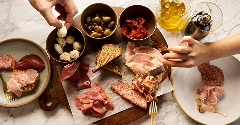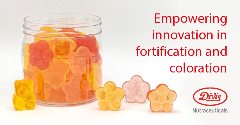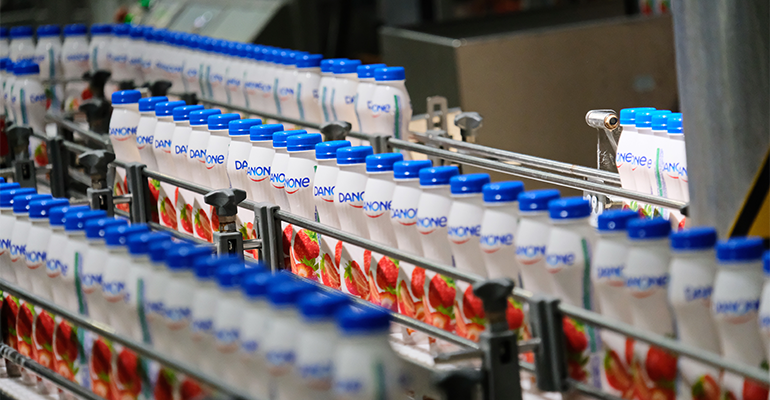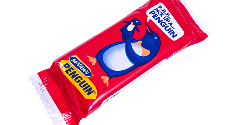News
Making the traditional modern: How food reinvention fits into NPD success
20 Sep 2022
From cauliflower pizza to kale chips, success stems not from introducing a brand-new product to the market but reinventing popular or traditional foods for a new audience, according to New Nutrition Business.
Building on the trust of popular foods with a taste twist or added health benefits not only taps into a demand for new flavours but also the wellness lifestyle that encourages ‘real’ food consumption.

The recent Covid-19 pandemic has served to accelerate this, amongst other trends, with consumers taking a heightened interest in the link between food and health, as well as how sustainable its production methods are.
But is there some formula that firms can follow in which a reinvented food is launched, develops a so-called ‘health halo’ and then goes on to become a hit with consumers?
To take this one step further, is there a blueprint that turns a basic food into a fresh, premium product ensuring a new lease of life amongst shoppers?
“The biggest successes in food and health are not based on radical new technologies but on traditional foods, reinvented and made easier for consumers to enjoy,” explains Julian Mellentin, founder of consultancy firm New Nutrition Business.
“Consumers tell us that they want foods to be as natural as possible, with clean labels and fewer ingredients, and the food industry has used technology to deliver that. Good technology makes traditional foods modern.
“But people don’t like eating obvious technology so you must apply it discretely to making the old new again. The skill of NPD teams in re-making ‘old’ foods with better tastes or more convenience has driven many successes from the almond to the cauliflower,” he adds.
Fresh for success: The case of canned tuna
Taste and convenience are the bywords of US-based start-up Freshé, which in 2018, set out to reinvent familiar fish proteins like tuna and salmon into nutritious and tasty meals on-the-go.
Explaining the inspiration behind the tinned meals, the firm’s co-founders Henry and Lisa Lovejoy said, “The more exciting discovery was a centuries-old European tradition of preserving premium-quality food in tins.”
“We began to experiment,” the husband-and-wife team adds. “Beginning with responsibly sourced proteins, we designed traditional, globally inspired recipes filled with wholesome vegetables, legumes, vibrant herbs, spices, and olive oil.
“We know that amazing foods preserved with skill make delicious meals a reality well beyond harvest.”
Reaction to Freshé’s offering appears positive, with one consumer describing the product on social media as “the best thing that ever happened to canned tuna."
Freshe’s success is a good example of blending a tried-and-tested food, with flavours that are European-inspired, and introducing them to an unsuspecting but appreciative US audience.
Its range of tinned fish products with names like ‘Provence Nicoise,’ ‘Sicilian Caponata,’ ‘Moroccan Tagine,’ and ‘Barcelona Escalivada’ add to the sense of traditional foods and flavours updated for today’s discerning audience.
Familiarity with fish could be key to acceptance
Perhaps the main key to Freshe’s success is the use of fish protein as the core ingredient of their products. Consumed for hundreds of years, fish’s health benefits are undisputed and comfortably sit as both a staple food and premium offering.
“When the ingredient is widely accepted and its benefits understood it's always easier to get consumer acceptance,” says Mellentin.
“You just have to make sure that the product format in which you are delivering the ingredient and the benefit make sense to the consumer.”
 © AdobeStock/Анастасия Коровина
© AdobeStock/Анастасия Коровина
Areas for reinvention: Collagen and coffee
Here, Mellentin refers to another protein form or format that also enjoys consumer recognition and associations to positive health benefits.
“Collagen is also an interesting one because it reminds us that 'looking good' is a huge part of human motivation - it's what's behind weight management for example.
“We are often told that younger female consumers are very driven by 'plant-based' and yet they have enthusiastically embraced collagen sourced from beef cattle in Brazil.
“When the benefit is strong enough, people are willing to put their stated strong beliefs to one side to get that benefit.”
Another example might be coffee. Thanks to the skill of NPD teams, coffee – a 400-year-old beverage – is now thought of as an energy drink, due to documented associations with caffeine and sporting performance.
“It’s a category which continues to reinvent itself and expand.,” says Mellentin. “Reinventing” can mean adapting a food into a product format that is new and more interesting and more convenient than the traditional form – such as turning kale into chips or cauliflower into pizza.
Provenance and sustainability
But Freshé, like so many food and drink start-ups, has also tapped into the sustainability aspect that is almost a prerequisite for food, particularly seafood nowadays.
Its emphasis on responsibly sourced meals made from certified sustainable protein has been key in capturing an audience that places environmental, social and governance as top purchasing priorities.
The issue of sustainability of foods has gathered much momentum in recent years, to a point where it has become just as important as the food’s taste and quality.
Reinventing foods can also mean a rethink to how the food is sourced, made, and distributed along the supply chain, offering improvements on old, more wasteful practices that don’t fit into a more environmentally conscious audience.
“Provenance and sustainability are both food-factors now, not non-food factors,” acknowledges Mellentin.
“Provenance matters with ingredients because of the growing number of people who want food from somewhere, not anywhere.
“However, provenance can mean just the idea of taking a product from one place and introducing it in a new place.
People like the idea of a back-story, adds Mellentin, referencing Greek yoghurt as an example of a food that doesn't need to be authentically made in Greece, but made elsewhere 'in the style of', which is good enough for most people.
“The provenance and back-story of the food have been integral to the success of Greek, skyr, kombucha and many others,” he points out.
As for sustainability, that’s another matter according to Mellentin, who says that people expect their products to have sustainability credentials but see it as just what food companies must do to be on the shelf.
“Apart from about 5% to 10% of consumers, sustainability is just one selling point among all the other normal features and benefits of a food and most people will not pay a premium for sustainability, other than a few people for niche brands.
“The packaging is the most important way that consumers see and think about the sustainability of your product and all other messages rank below that.”
Related news

Oat Barista: Innovation for game-changing beverages
20 Nov 2025
Oat Barista is a clean label, sustainable, and innovative drink base specifically designed to create the perfect foam in one single ingredient.
Read more
Nitrites: Pressure grows on UK to follow EU’s lead
20 Nov 2025
Pressure is growing on the UK to follow the EU’s lead after the bloc revised its regulations on the permitted levels of nitrites and nitrates in cured meats.
Read more
Empowering innovation in fortification and colouration
13 Nov 2025
Divi’s Nutraceuticals offers a large portfolio of innovative, high-quality ingredients for foods, beverages, and supplements, with bespoke solutions and expert support for product success.
Read more
Danone highlights digestive health as potential ‘tipping point’ for food industry
13 Nov 2025
Danone is betting on a food industry “tipping point” that will bloat the market for healthy products, particularly those related to gut health.
Read more
Standing Ovation and Bel scale up casein production from dairy co-products
11 Nov 2025
Foodtech company Standing Ovation has partnered with cheese specialist Bel Group to manufacture dairy serums for industrial-scale casein production via precision fermentation.
Read more
AI attraction means foodtech startups must ‘prove’ rather than ‘promise’
4 Nov 2025
Reports suggest that artificial intelligence (AI) is sucking investment from foodtech and agritech, but investors say the picture is complicated.
Read more
Will postbiotics become the go-to functional ingredient?
3 Nov 2025
Postbiotics show significant promise for the functional foods market due to their safety profile and beneficial bioactive properties, research suggests.
Read more
Meet the finalists of the Fi Europe Innovation Awards 2025
31 Oct 2025
Who made it to the shortlist of the Fi Europe Innovation Awards 2025? Read about the 23 companies making food and drink products healthier and manufacturing processes more efficient.
Read more
Penguin and Club bars no longer classed as chocolate
30 Oct 2025
Penguin and Club bars can no longer be classified as chocolate after the pladis-owned McVitie’s brands turned to cheaper alternatives amid the ongoing cocoa crisis.
Read more
Shorter drying time, sweeter success!
30 Oct 2025
Curious about cost-effective, sustainable and delicious candy making? Stefan Wessel reveals how Avebe’s solutions reduce drying time and energy use by up to 50%.
Read more